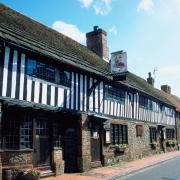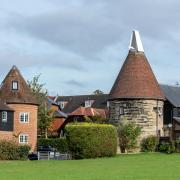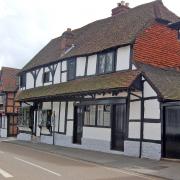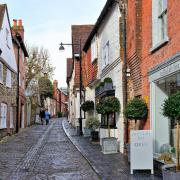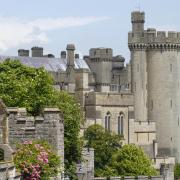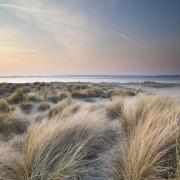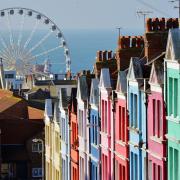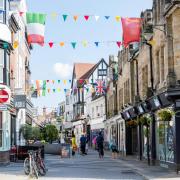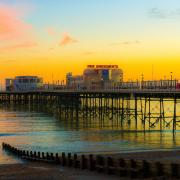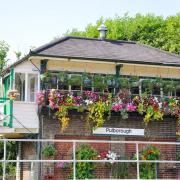Things to do in the East Sussex medieval town of Rye

The East Sussex medieval town of Rye is, at first glance, a picture postcard vision of Olde England, all meandering cobbles, half-timbered houses and charming idiosyncrasies. One of the south coast's historic Cinque Ports, its strategic importance lends Rye some of its atmosphere - the citadel was originally enclosed by four gates, of which Landgate Arch is the only survivor. The town was also a busy port with all the attendant excitement and foreign influence, and there is a long history of smuggling in the area.
But that's all a long way from today's genteel town, surrounded by golden beaches and a sweeping coastal plain. The beauty of the area attracted the attention of JMW Turner, who produced a number of paintings and drawings depicting the local area.
The town has also long held an attraction for writers, its resident scribes including Henry James, who lived for many years at Lamb House, now a National Trust property; lesbian novelist Radclyffe Hall; and EF Benson, whose comic Mapp and Lucia novels have been twice adapted for television and filmed in the town.
Netflix behemoth The Crown also filmed scenes in Rye for the most recent series, so the town is well used to welcoming actors and crews. Today Rye is famed as a weekend break destination, thanks in part to its excellent independent and antiques shops and blossoming food scene.

In the Morning
Rye Harbour Nature Reserve is one of the most important wetland conservation sites in Britain, where you might spot birds including the oystercatcher, little grebe or kingfisher, or some of the 517 flowering plants recorded on the reserve. Similarly beautiful are the sweeping dunes of Camber Sands, which you can walk to from the centre of town - it's about three miles.
Also worth seeing is the ruined Camber Castle, built by Henry VIII and open by guided tour only. Sussex Wildlife Trust runs monthly guided walks around Rye Harbour Nature Reserve which include the castle.
On arriving in Rye itself, lose yourself for a while among its picturesque, winding streets, with evocative names such as Traders Passage and Watchbell Street. The most famous (and photographed) of them all is Mermaid Street, with its steep gradient, cobblestones and higgledy-piggledy half-timbered houses.

Afternoon onwards
Explore National Trust property Lamb House, the former home of American writer Henry James who moved to Rye in 1897. He wrote many of his greatest works during this period, including The Turn of the Screw and The Wings of the Dove. Lamb House later became the home of another writer, EF Benson, and doubled as Mallards, the home of the title characters, in the recent BBC adaptation of his stories. Nearby, beautiful St Mary's Church dominates the hill on which the Old Town stands. Originally dating from the 12th century, the church has suffered some indignities during its long history including the theft of its bells by French invaders. The bells were later recovered and one was hung in Watchbell Street to warn of future invasions. The tower is open to visitors daily for a fee and boasts outstanding views.
After a spot of sustenance in one of Rye's many coffee shops, head for the Ypres Tower. It was built in 1249 as a defence against the French and is now one of Rye Castle Museum's two sites. The tower (also known as Rye Castle) enjoys views over what was once one of the most important harbours in England and houses an exhibit on the conditions for women prisoners kept in the Women's Tower, which was restored in 2014. The main museum site in East Street, housed in a former bottling plant, details the history and development of the town.
If you fancy a spot of shopping around now, head straight for the antique shops at the bottom of the quay - you could spend hours there, so best to pace yourself. Other highlights include haberdashers par excellence Merchant and Mills; Rye Old Books and the Tiny Bookshop for bibliophiles; and Pale and Interesting and The Shop Next Door for beautiful interiors. Rye has a thriving music scene, including its annual jazz and blues festival which this year will include six concerts in the town over the May bank holiday weekend. For other evening entertainment, the Kino cinema has proved popular with locals and has a pleasant atmosphere with a café bar and lounge.
Day On A Plate
This month, make a note of Rye Bay Scallop Week (22 February to 1 March) when various venues in the town will showcase the delicious seafood. There will also be tasting events, cookery schools and demonstrations - find out more at scallop.org.uk
We would also recommend visits to Tuscan Rye which serves authentic Italian regional dishes from its Lion Street restaurant, classic fish and seafood at Webbe's on Tower Street and brunch at Whitehouse Rye on the High Street.
Don't miss out on a visit to The Mermaid Inn, where Shakespeare performed with his Lord Chamberlain's Men in 1597. The 600-year-old pub has a fascinating history, from providing a drinking den to smugglers in the 18th century to offering sanctuary to Catholic priests fleeing persecution.
If a picnic is more your thing, head to the Rye Deli on Market Road.
Why the locals love it
Ian Bowden
Director of Rye International Jazz and Blues Festival
The beautiful and historic town of Rye is the perfect location to present the festival. Rye is an incredibly special place with so much history.
St Mary's Church is the festival's main venue. It boasts almost 1,000 years of history and is a must-visit; from the church tower you can see for miles across Romney Marsh.
ryejazz.com
John Minter
Editor of Rye News
With its hilltop position and narrow cobbled streets Rye is buzzing in summer but quiet and sometimes almost mysterious once the crowds have departed. No wonder it has appealed to artists and writers for generations. I love, too, the myriad pubs and restaurants. My own favourites are the Tuscan, for eating, and the Waterworks and Standard pubs for drinks and conversation.
www.ryenews.org.uk









